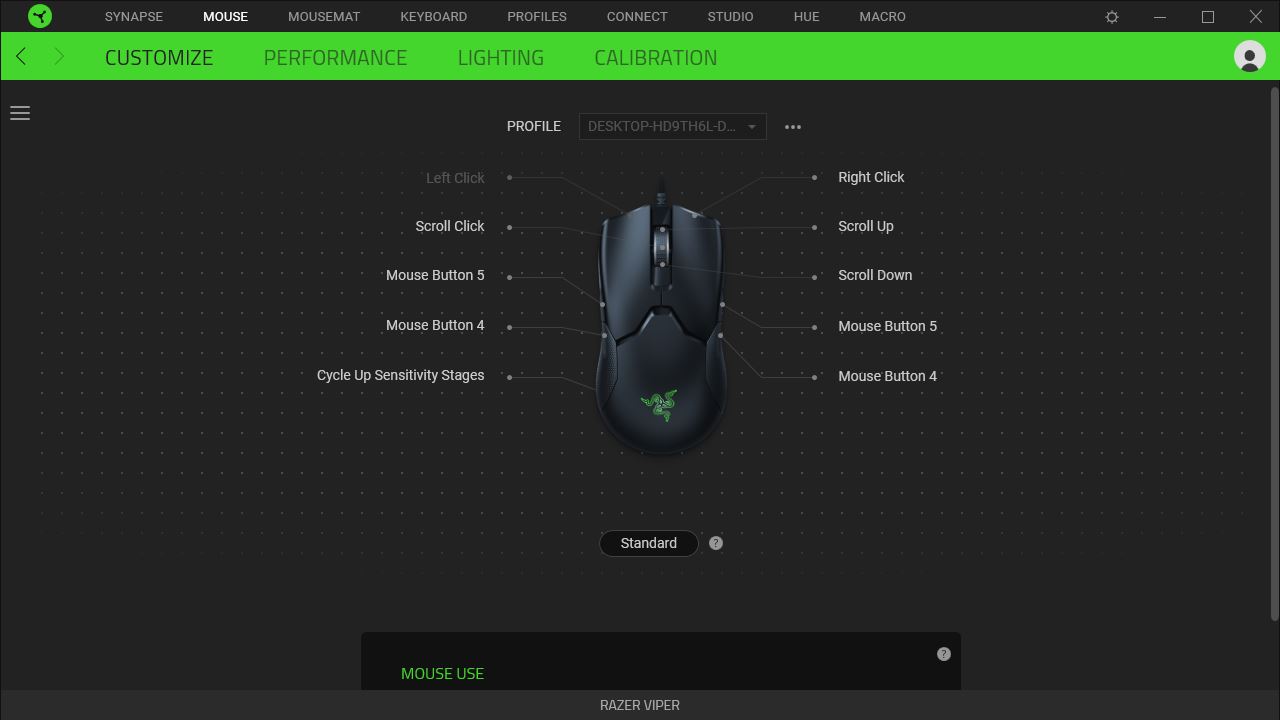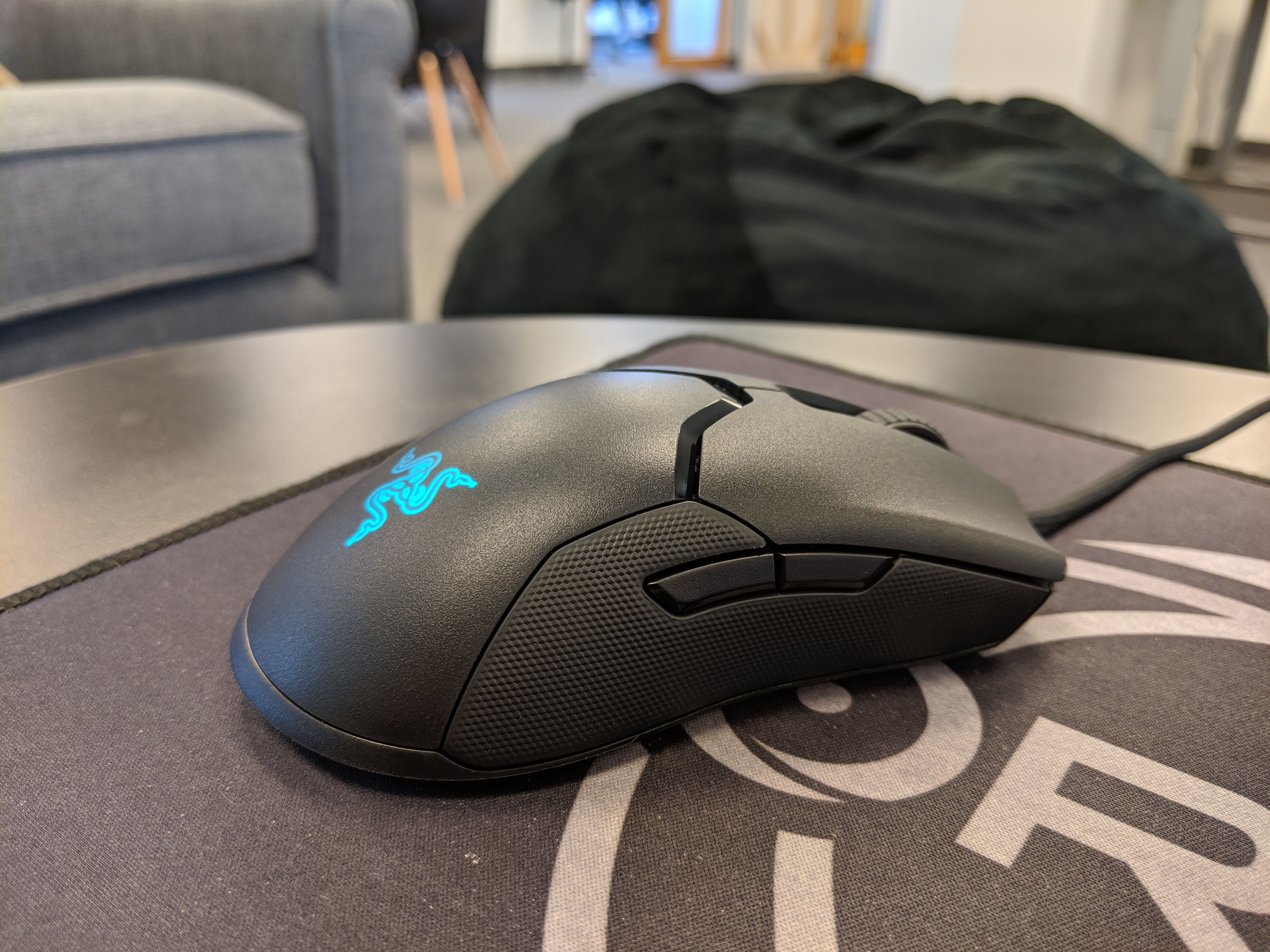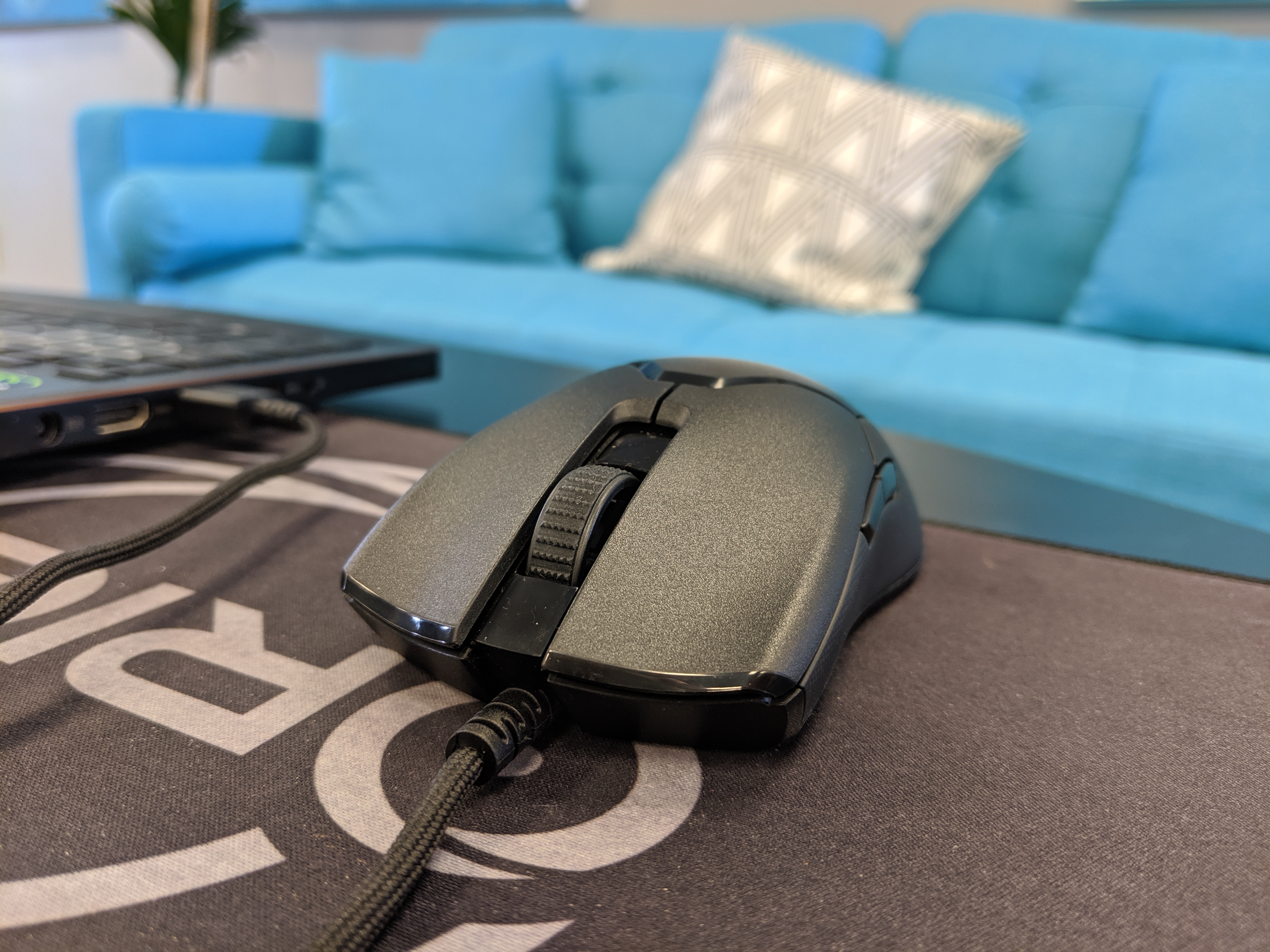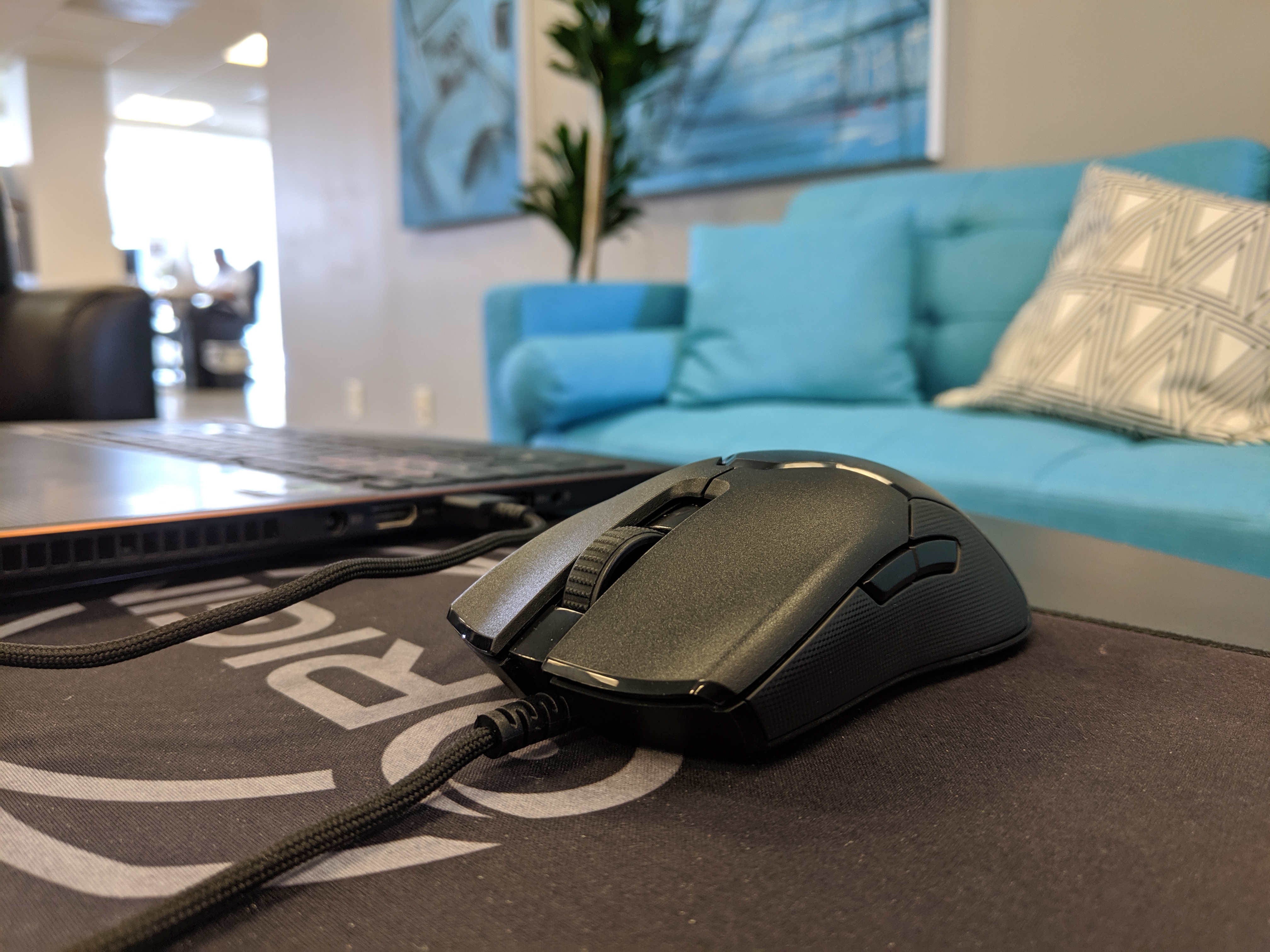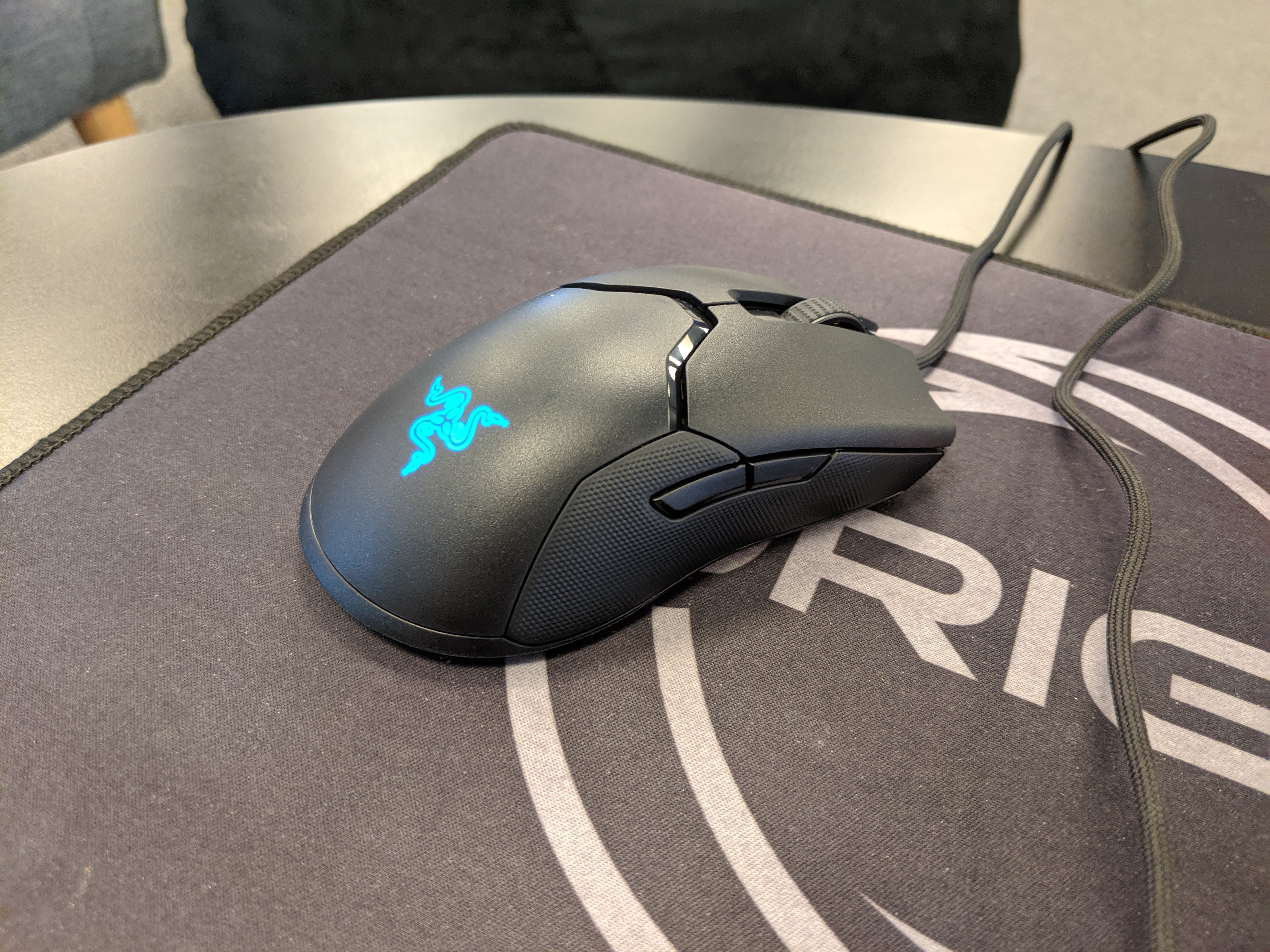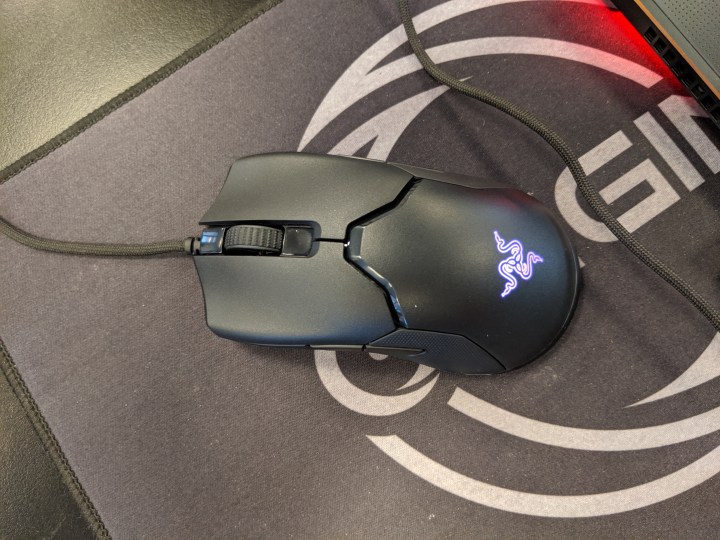
Viper snakes are known for their aggressive temperaments and lightning-fast attack speeds, so it’s appropriate that Razer would name its latest gaming mouse after the deadly reptile. The Razer Viper is the lightest of its gaming mouse lineup. That means it also hopes to prove the fastest. Its lightweight, ergonomic build and optical mouse switch deliver impressive performance, even if some odd design choices lessen the strength of its bite.
The Razer Viper is a wired mouse with an ambidextrous build. The layout is symmetrical. This is a wonderful feature for ambidextrous players such as myself, even if the execution is a bit flawed. To enjoy the benefits of the Viper’s ambidextrous design you need to use the Razer Synapse software to flip the controls to the opposing side. It would be more intuitive to have a dedicated physical button, so left-handed players can enjoy the same plug-and-play experience that right-handed gamers do (the mouse defaults to the right-handed configuration out the box).
You will find a button for adjusting DPI, a common feature on gaming mice. Offering up to 16,000 DPI, each button press cycles through five per-programmed settings — 400, 800, 1800, 2400, and 3200. These can be changed via Razer Synapse to suit your personal preferences.
The placement of the Viper’s DPI button is a bit peculiar as it resides on the bottom of the mouse, which Razer says prevents accidental DPI switching. Of course, it also limits your ability to change the DPI on the fly. Gamers sometimes like to lower the DPI with a click for precise, slow movements — like sniping in a first person shooter. You can’t do that with the Viper.
There’s no on-board storage, so you can save your settings to the mouse. You can save them to Razer’s Synapse software, however, and download them when you use a different PC. On-board storage would allow for quicker, more reliable retrieval of settings, but cloud storage gets the job done as long as you have an internet connection.
Light and Lethal
The Viper’s real appeal is its weight and performance. Coming in at 69g, it’s the lightest wired mouse Razer has released to date.
When I first pulled the Viper out of the box, I thought it felt flimsy, especially compared to my staple FPS mouse, the Logitech G502 Hero. After plugging it in, I noticed the RGB lighting is limited to the Razer insignia that will usually be covered by your hand. After a few hours of playing Overwatch and switching back to my usual Logitech mouse, however, I preferred the Viper’s speedy, lightweight, ergonomic design.
The indentations have a rubber grip that makes the mouse easy to control, enabling precise movement. The narrow, light body make frequent, quick gestures in heated firefights less of a frantic bumble. The Speedflex Cable, a new type of cable designed by Razer to reduce drag, delivers on its promise. At no point did I have to tug on the cable or drag and reposition my mouse when playing. The cable itself is soft, light, and flexible.
The Viper’s most important feature is its Optical Mouse Switch. It replaces a standard mechanical switch with an infrared light to deliver instantaneous electrical signals to your computer. Razer touts this eliminates unintended clicks and decreases the actuation time of the mouse to 0.2 milliseconds. If you’re a real nerd for numbers, Razer says the Viper has a maximum tracking speed of 450 IPS (inches per second) and a button actuation force of 50g.
I’d recommend the Razer Viper to anyone seeking a premium gaming mouse built for maximum speed.
I certainly felt the Viper’s responsiveness as I played. Whenever I was ejected from my D.Va mech suit in Overwatch, I had a grand ol’ time picking off enemies with my pistol. There was no noticeable latency and each click registered. Razer’s “faster than the speed of light” marketing slogan may be hyperbole, but the Viper did seem quicker and more nimble in my hands than other mice I’ve tested.
At its price point of $79.99, I’d recommend the Razer Viper to anyone seeking a premium gaming mouse built for maximum speed. For a bit more, you could get the SteelSeries Rival 710, which performs similarly with a few extra bells and whistles. If you have less to spend, Logitech’s G Pro Hero

